Text
Okay I JUST realized I never posted these on here—- BUT BASICALLY, about a year and a half ago I started doing these experimental black hairstyle posts that were threads long on Twitter, to give artists a source of inspo for their black ocs whose hair they wanted to try something new with! There’s more to black hair than just the selected styles portrayed in media, and I thought it would be fun to show people how much texture, shape, fades, length, and style can be combined when drawing black hair—-cause it’s a kind of manipulation our hair can do irl! The OG posts were lost with the hacking of my original Twitter account (@/bagels_donuts) but I’ve since reuploaded the whole thread to my new Twitter (@/ItsDonutsFR)! I hope artists on tumblr find these useful, sorry it took me so long to post them here😭🙏🏾 I’ll upload them all in parts!








Part 1: Long masc hairstyles + playing with fades
51K notes
·
View notes
Note
You probably get asked this a lot, but how do you draw hands? Even when I'm tracing, they look so weird 🙃



I could probably go on and on and on about hands, but here are some key points I compiled! I LOVE drawing hands, and I never hesitate to use my own as a reference
24K notes
·
View notes
Text
My Fat Art Resources Masterpost
Dropbox link with scans of Morpho: Fat and Folds (highest quality ive found)
Archive.org link to scans of Morpho: Fat and Folds
How to draw fat bodies by @ strawberrylind
Tips on drawing big people by @ gubbins-turtledove
Fat bodies tutorial by @ wxrmandfxzzies
Drawing fat simple by @ necronatural
Chubby guide by paggiart (twitter link) (tumblr link)
Guide to drawing fat bodies by @ scwibbs
Double chins by @ officialspec
How I draw fat people by @ iwasarob0t
Stylized fat bodies by @ hometownrockstar
How I Draw Fat Furries by @ mushpuppies
3K notes
·
View notes
Text
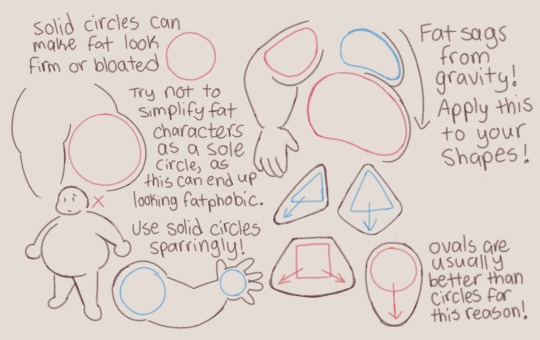
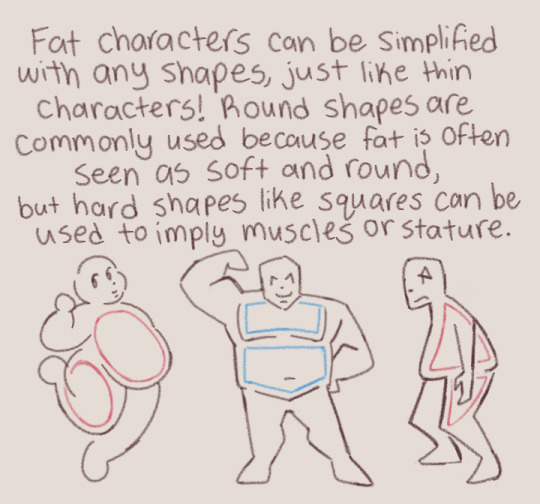
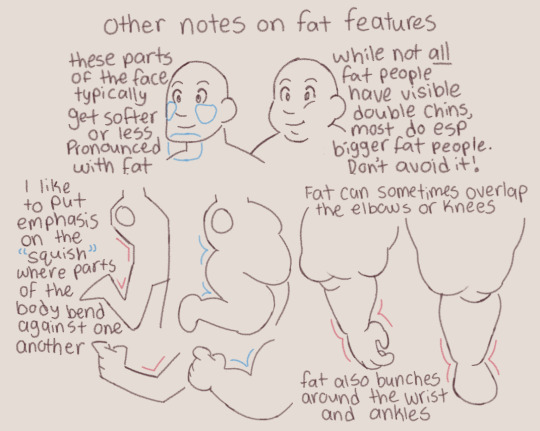
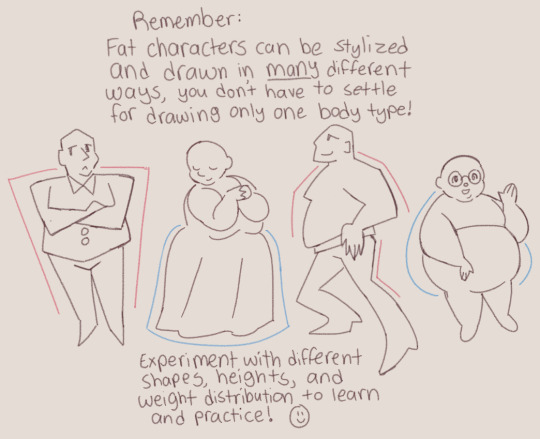
some notes on drawing fat bodies in a stylized or cartoony art style! i tried to explain and illustrate things i keep in mind while drawing :)
57K notes
·
View notes
Photo

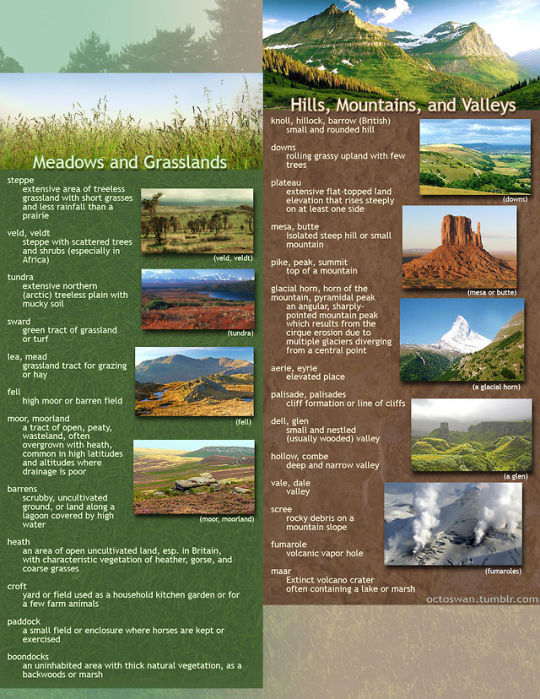



I made these as a way to compile all the geographical vocabulary that I thought was useful and interesting for writers. Some descriptors share categories, and some are simplified, but for the most part everything is in its proper place. Not all the words are as useable as others, and some might take tricky wording to pull off, but I hope these prove useful to all you writers out there!
(save the images to zoom in on the pics)
215K notes
·
View notes
Text
>Watercolor Textures For Artists<

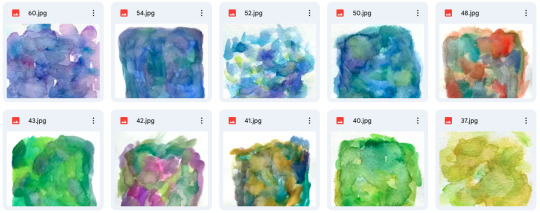
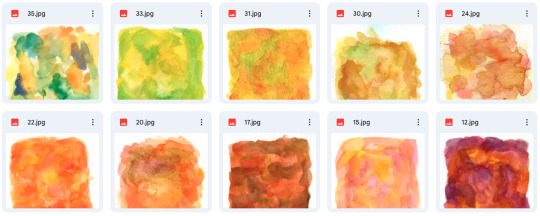
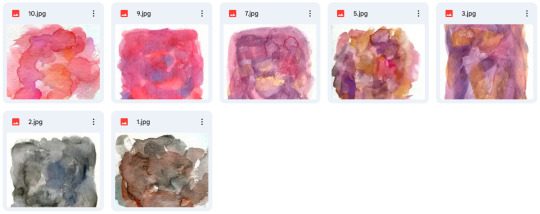
These are textures that I painted and scanned for use in my art, and I'm happy to share! Anyone is free to use them for personal or commercial artwork, as long as they're substantially modified or part of a larger piece. (i.e., if you're drawing a character you can stick one as-is on the character's shirt, or you can use one to texture an illustration that you're printing on a real shirt, but do not just print one as-is on a real shirt).
There's definitely no need to credit me when you use these, though it would be nice of you to keep the link to this post handy in case a fellow artist asks for it!
As I said anyone is free to use them, but if you want to tip, here's my ko-fi. If a lot of people like these, maybe I'll make more and add them to the google drive.
Here's a tutorial on how I use these textures in my own illustrations.
Have fun!
332 notes
·
View notes
Text



Drawing bases & pose references pt 72 🫶💖💖💖
3 extra valentines poses for patrons!
6K notes
·
View notes
Text




ive been wanting to make smth like this for a little while now and i finally finished it up ^_^ hopefully my tricks are helpful
12K notes
·
View notes
Text
some fucking resources for all ur writing fuckin needs
* body language masterlist
* a translator that doesn’t eat ass like google translate does
* a reverse dictionary for when ur brain freezes
* 550 words to say instead of fuckin said
* 638 character traits for when ur brain freezes again
* some more body language help
(hope this helps some ppl)
239K notes
·
View notes
Text








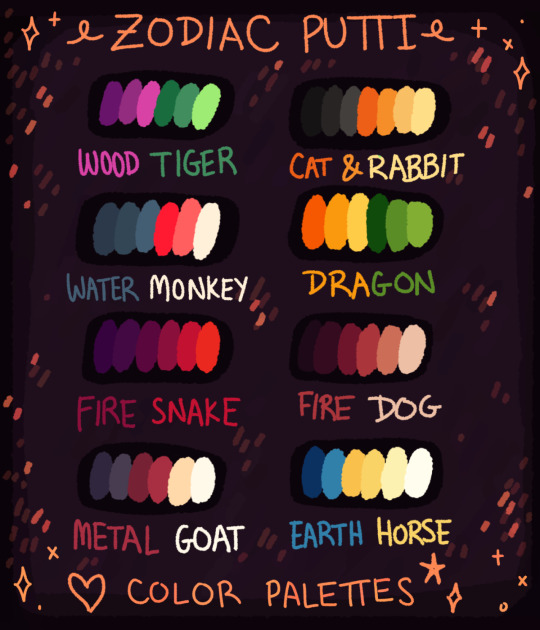

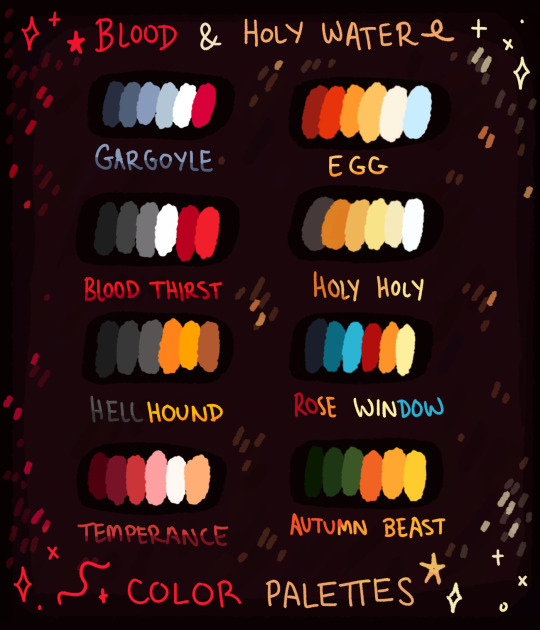

All my color palettes! Feel free to use these colors, and tag me if you’d like.
2K notes
·
View notes
Text

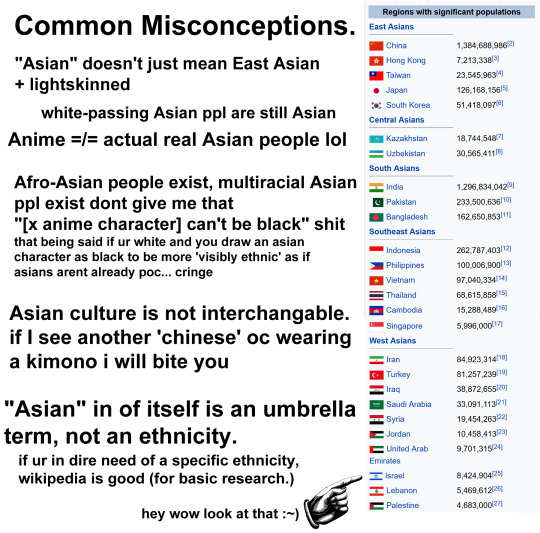
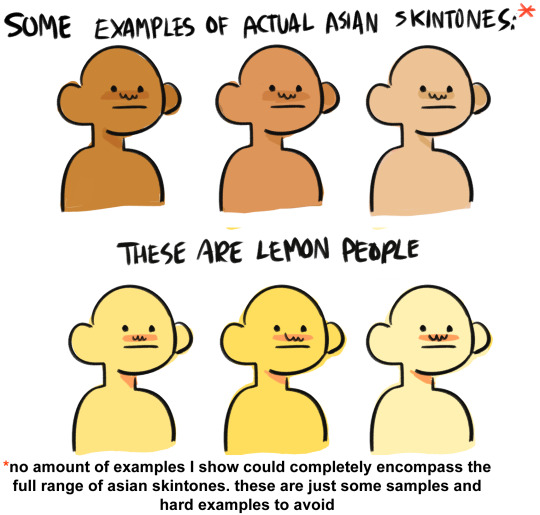
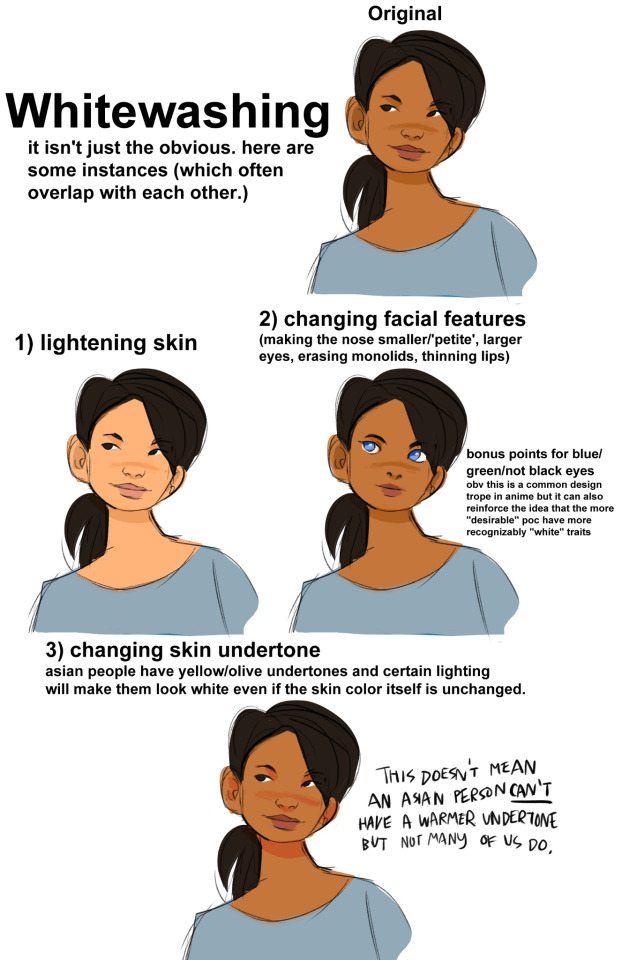

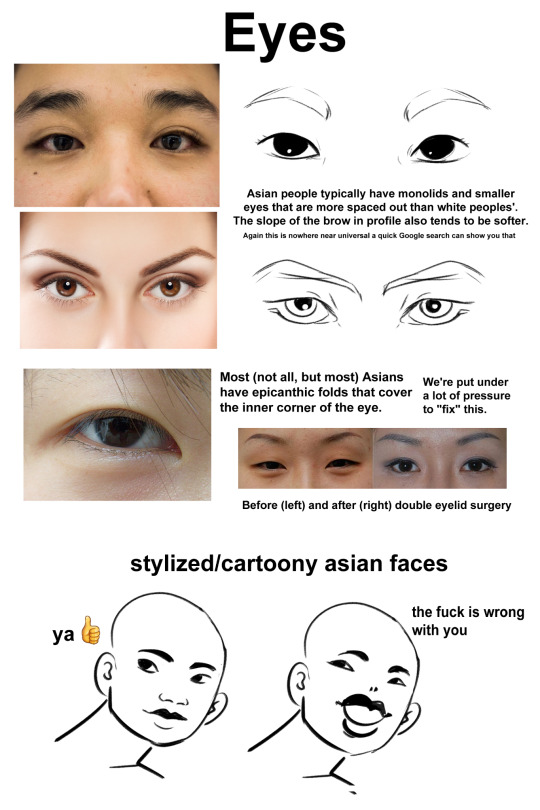
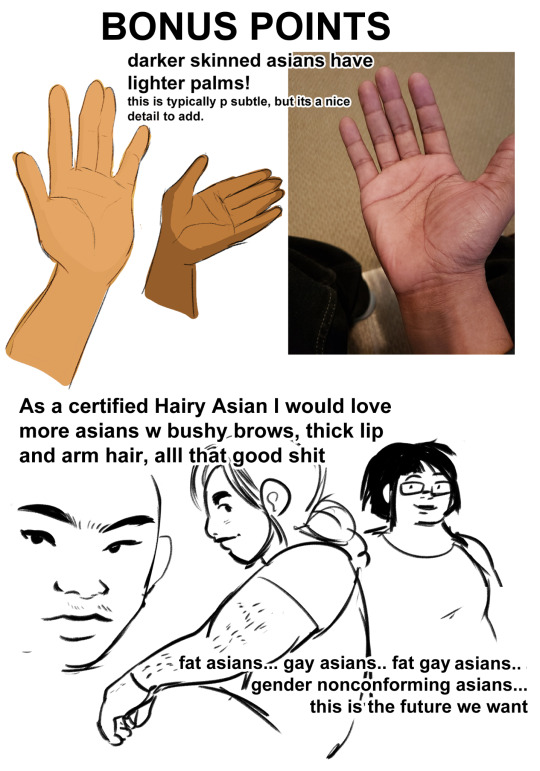
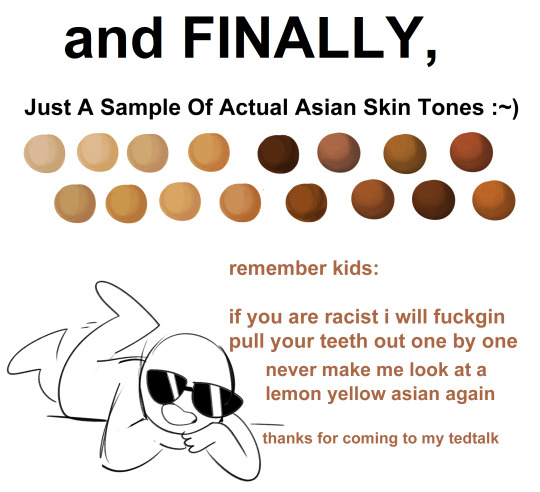
disclaimer: I am east asian. if anyone who is not white sees anything wrong with my phrasing, inaccuracies, or insensitivity, or something I missed, please feel free to add on. I'm just one person with one perspective; none of what I say should be taken as The Singular way to draw an Asian character. if you havent done so already, please take the effort to expand your view of Asian culture outside this one tutorial.
if a white person reblogs this and adds something stupid I'm going to bite and kick you like a wild animal
156K notes
·
View notes
Text
“It’s Giving” AAVE, and the Denied Yet Undeniable Impact of Black Culture
youtube

I grew up knowing it as Ebonics; I didn’t hear 'AAVE' until I was an adult. Apparently it’s used derogatorily- I did not know. But when Robert Williams coined the term in the 70s, its meaning was:
“…the linguistic and paralinguistic features which on a concentric continuum represents the communicative compentence of the West African, Caribbean, and United States idioms, patois, argots, ideolects, and social forces of black people…Ebonics derives its form from ebony (black) and phonics (sound, study of sound) and refers to the study of the language of black people in all its cultural uniqueness.”

Familiar Examples include but are not limited to:

The History
youtube
It was unbelievably difficult to find a solely Black perspective on the subject. I’m gonna need everyone to let Black linguists talk, it’s literally their job. Anyway, I need y’all to actually WATCH this video. Don’t skip it thinking I’ll summarize. Watch it. Actually listen. That’s part of the problem to begin with, is not listening. Even if you have to read this lesson later, so be it.
One of the points emphasized in this video was that AAVE was formed of the need to communicate, and specifically to communicate in a way that hid what we were saying and thinking from antagonistic white society.
“…“the disguise language used by enslaved Africans to conceal their conversations from their white slave masters to the lyrics of today’s rap music, [the magical power of] the word has been shaped by a time when, as observed by Harlem newspaper writer Earl Conrad, ‘it was necessary for the Negro to speak and sing and even think in a kind of code.’””
Because it was in a form that white people could not understand, as well as already existing racist biases against the humanity and intelligence of Black people, naturally it was assumed that our way of communicating was ignorant and ‘false’. Even acknowledging it as a valid language was seen as abhorrent, by nonblack and certain Black people.
“For decades, linguists and other educators, pointing to the logic and science of language, have tried to convince people that Black English exists, that isn’t just a politically correct label for a poor version of English but is a valid system of language, with its own consistent grammar. In 1996, with the unanimous support of linguists, the Oakland School Board voted to recognize AAVE, or the more politicized term “Ebonics” (a portmanteau of “Ebony” and “phonics”), as a community language for African American students, a decision which might have opened up much needed additional funding for education. Instead it resulted in intense public backlash and derision due to the still widespread, incorrect belief that Black English was an inferior, uneducated form of English associated with illiteracy, poverty, and crime. It’s hard for a language to get ahead when it keeps getting put down. Some linguists, such as John Russell Rickford, have noted how even sympathetic linguistic research, which has derived a lot of benefit and understanding from Black English grammar, can unknowingly focus on data that represents African American communities negatively, giving “the impression that black speech was the lingo of criminals, dope pushers, teenage hoodlums, and various and sundry hustlers, who spoke only in ‘muthafuckas’ and ‘pussy-copping raps.’” The term “Ebonics” even now is used mockingly by some as a byword for broken English.”"
(Some of) The Rules
youtube
AAVE is a full dialect with grammar and social rules. But the ones most people are familiar with include:
Th becoming D (“dats”)
Double Negative (“I ain’t see nobody”)
Habitual Be (“It’s cuz he be on that phone”)
Possessive s absence (“I’m going to my grandaddy house”)
Question word order (“who that is with the ice cream and cake?”)
Zero copula (“who that?”)
"Why do you talk like that" Would you rather I code switch?
“Code switching, or adjusting one’s normal behavior to fit into an environment, has long been a strategy for BlPOC individuals to navigate interracial interactions successfully. Code switching often occurs in spaces where negative stereotypes of Black individuals run counter to what are considered appropriate or professional behaviors and norms in a specific environment, and regularly happen in work settings.”
In this context, you might recognize it better as “using your white people voice”.
youtube
Some Black Americans, for varying reasons including internalized antiblackness and a desire for assimilation, hate AAVE! Some people will hate that you don’t use AAVE! Never assume we’re all on the same page about its use! My own mother used to be big on speaking ‘proper English’.
Regional Differences
The same way regional differences affect standard pronunciation, it’ll affect the AAVE used. Culture in the area as well will affect the words that come from it. So someone Black using a phrase in Philadelphia might not automatically know what someone Black from Compton is saying.
Someone did their dissertation on this topic, and while I’m going to link the summary for yall to give it a shot, Imma be honest- I do not understand this. I tried. It’s interesting how something that comes so innately, once written out like this is like WHAT. But the research has been done!
Easier examples include:
"Aaron earned an iron urn"- Baltimore
GloRilla and "Mursic"- Memphis
A lot of AAVE from New York City is popularized; so you might hear words from anywhere that originated from Harlem or Queens, or New York Ballroom culture
Tonal Languages
One major source of misunderstanding AAVE is people not understanding tonality. AAVE is often tonal, similar to many African languages, languages in general- meaning that unless you hear it or are innately familiar with how it’s spoken, you might not know HOW I’m saying something and therefore will not understand what I’m trying to convey. Given the history, this was on purpose!
Black language- Black culture in general, really- is often conveyed orally. Everything we say and do is not going to be written down for someone else to study. Doesn’t mean we weren’t saying or doing it. If you want to understand, you have to listen!
“Linguist Margaret G. Lee notes how black speech and verbal expressions have often been found crossing over into mainstream prestige speech, such as in the news, when journalists talk about politicians “dissing” each other, or the New York Times puts out punchy headlines like “Grifters Gonna Grift”. These many borrowings have occurred across major historical eras of African American linguistic creativity. Now-common terms like “you’re the man,” “brother,” “cool,” and “high five” extend from the period of slavery to civil rights, from the Jazz Age to hip-hop: the poetry of the people. This phenomenon reflects how central language and the oral tradition are to the black experience.”
Some examples:
1) "You Good" can mean, depending on how it is said and the context in which it is spoken:
Are you okay?
Do we have a problem?
You’re okay.
You don’t want these problems so chill.
Do you have enough money/resource?
It’s fine! Don’t worry about it.

2) This was an interesting experience, watching the misunderstanding of AAVE occur live. It’s the realization that people read this as “This is something Bugs Bunny would wear” versus “Bugs Bunny would wear the fuck outta that outfit”. But if you didn’t know that, if you aren’t familiar with the tonality of AAVE, of course you’d think the first one is what it meant! And it's not wrong-wrong - he would wear it, but that's not necessarily all it meant.
3) “Chill-ay” versus “Chile”. Yeah, we didn’t forget that. This is often why AAVE is used to sound “aggressive” on the internet- if you perceive (however subconsciously) how Black people speak is aggressive, then when you decide to emulate my speech in your moment of aggression, it is because you think my Blackness will make you seem more intimidating! You find Blackness… intimidating. Same reason you think it makes you funnier than if you were to deliver the same joke using your own dialect. It means the jokes not funny; my language is what’s funny.
Black American Sign Language
We even communicate differently in sign language; there’s an entire history and culture behind the Black deaf experience.
youtube
“In April 2020, Nakia Smith, aka Charmay, created a TikTok account introducing five generations of her Black Deaf family and how they communicate in Black ASL. As a social media influencer of Black ASL content, Charmay made a series of educational and informative videos on the history and practice of Black ASL. Charmay’s video went viral, landing in a New York Times article, Black, Deaf and Extremely Online, and Blavity: TikToker Has Gone Viral For Putting The Culture On To Black American Sign Language. Additionally, Netflix requested Charmay to explain the difference between Black ASL and ASL.”
Everyone doesn’t speak AAVE!
If your Black character is not Black American, and has never once been connected with Black American culture or people, they are probably NOT going to speak AAVE! They’re going to speak whatever dialect THEY have! And that doesn’t make it any less “Black” of them!
Different dialects and languages across the diaspora include but are certainly not limited to:
Black British English
Haitian Creole
Gullah
Jamaican and Caribbean Patois
Everyone Owes Rihanna an Apology
Y’all remember the song Work. I know you do. It was mainstream’s love and joy when this song dropped to be overtly racist about it, Black Americans included. Everyone claimed it was ‘gibberish’, that she was just mimicking language on a song and ‘it would be popular’.
Meanwhile, it was her singing in her native island patois! The people who spoke her language understood it! Anybody who actually tried to understand it, understood it! Another popular song, Sean Paul’s Temperature, is also in patois! And I thought we loved that song!
So next time Black people speak and you find yourself thinking- ‘wow, this makes no sense’, I want you to think to yourself: ‘does it make no sense, or do I just lack the context/knowledge/language to understand it?’
NOW THAT WE’VE HAD SOME EXPLANATION BEHIND THE LANGUAGE!
Writing AAVE
Me personally, I admit I don’t like it being used in stories where it is clear the author doesn’t understand the dialect, or where it’s clear the only person who speaks it is the “Black character who OMG DID I TELL YOU THEY WERE BLACK”. I’d rather it be the regular Queen’s English. We speak that too. I’m not going to decry your fanfiction or your regular modern-day original story as “bad” if you choose to use whatever language your region commonly uses. We know how to speak it. We will be okay. Using AAVE is not going to sell me that this character is “Black” if the rest of the character writing is still bad.
If it means that much to you, because it is important to the character, then you as the writer need to commit to learning proper AAVE! This isn’t going to be a “look up every turn of phrase on google” or “ask Ice what every single thing means”. You’re going to have to do what everyone who learns a language does- immerse yourself in it! If you can’t be bothered to learn my language, I’m going to know that when I read your work.
Obviously if there’s a context where the Black people involved do not know how to speak a language, it is perfectly fine to show that, as long as you are showing that it’s not due to some innate stupidity or other stereotype that this person cannot communicate the same way others communicate around them.
“The N Word”
I know someone’s thinking it, so let’s address it. There’s a translation for this word in damn near every language that’s ever come across Black people. So don’t go “oh we don’t have that word in my language-” I bet money you do.
Yes, it could be used in historical context- the ‘hard -er’. Yes, it could be used in social context- the ‘-a’. It follows the tonality rules I discussed earlier; that is, the way it’s used and who is using it makes ALL the difference in how it will be received.
Everyone is not on the same page about the use of this word within our community. Some Black people think it should never be used, period, even by us! Some Black people think that it should be reclaimed and use it as such! The only thing we’re on the same page about is that YOU should not be using it.
I say this to say to nonblack writers: put the pen down.
My stance is, if you can’t understand AAVE, you CERTAINLY aren’t going to be able to incorporate the social use of this word. Period. If you scared of the potential smoke incurred if you fuck it up- and if we see it, you will catch it- don’t bother. Trying to “write realistically” does not cut it. You should be doing everything in your power to understand and write a great Black character in all ways before ever thinking this is something you should do. In fact, if you're that thirsty to use this word, you have some other things you need to consider.
In the historical context, just watch yourself. If you’re gonna drop that word, you need to be damn well-researched on every other aspect of Black life and oppression in whatever era you’re writing. Just dropping this word to say “life is racist” shows a lazy lack of understanding of antiblackness. You don’t even have to drop the whole word. A “ni-” at the end of the sentence is enough for me to know exactly where we’re going! But if you not gone do the rest of the work… you know what they say about stupid games.
The Fundamental Disrespect
If you watched the prior videos (and you should have) and paid attention up to this point, you have already heard the struggles that both AAVE as a dialect and those that speak it go through.
There’s a societal connotation of stupidity, aggression, and silliness behind the way I speak. None of those things are true, and it’s hard to be told that even the way you communicate with others is bad.
But the other reason it’s so hard is because we spend our lives hearing that those are the connotations… when WE speak it. It is not the language- it’s ME that makes it so! And that gets into the other part of this lesson, something that AAVE is oft victim to.
This part is a little scarier for me to write, because people don’t like it when you talk about Black Americans as a separate entity from the US of A as it is known. I’m gonna put on my political hat for a second, but I promise this ties into my overall point so stick with me!
Stolen Cultural Hegemony
The reality is that the United States of America has forced a cultural hegemony upon the planet (amongst other forms). Yes. That is due to the capitalism, colonialism, imperialism and damn near just about every other -ism at the US government and military’s disposal. I am not saying that part somehow changes, of course not. That’s just facts. There are people far smarter than I (Edward Said, take the wheel) who could explain this far better. But I’m only here to explain this one point.
What DOESN’T get acknowledged is how much of what is deemed American pop culture across the world is both 1) stolen 2) Black culture! We do not have equivalent political power despite what our hypervisibility would suggest, but our social currency is raw diamond- so naturally, it has to be plundered! The white American dollar might mean far more than my life, but it’ll pay for my creations- even more so when I’m not involved!
The issue is that if your society says that I am less than, how can you justify how you covet everything I create? If I’m supposed to be so much less than you, why do you seek my language, my fashion, my music, my body? Why do you feel entitled to my creation, but you think you should have it… Without me?
Sit on that one for a second!
Appropriation of AAVE
Let's refer back to that chart at the beginning. How many of these have you seen or even used before? How long did it take for you to know it was AAVE? Don’t get me started on the influence of AAVE in queer spaces!
Of course I’m going to get started. Ballroom culture, created by Black and Latino people in New York City in the 80s (Paris is Burning, anyone?), has spawned so much popular “gay” lingo, and it’s not even just “gay”- it’s of color! Black English in particular is the source of many of the words that queer people use now in casual conversation, brought into the ballrooms, normalized, and then proliferated with other communities.
I can always tell when a new phrase from AAVE has hit nonblack audiences because it’ll suddenly be in every sentence I see, often butchered. Remember that historical context- of having to speak in code. Have you ever considered why AAVE is always evolving? Why we have to find new ways to communicate with each other? Have you considered that when people are constantly taking and misplacing your words, they may lose meaning or value, and so you have to come up with something else?
Appropriation of Black Music
Jazz, swing, the blues, disco, rock and roll, pop, even rap and hiphop have all been subject to appropriation- intentional or not. Far more intentional than you might want to believe. And it all comes back to money!
White audiences in the 1900s loved Black music- as long as they didn’t know Black people were singing it! Often, songs would be completely lifted and given to white bands to re-record. When Frankie Lymon first came on stage to perform, some of the audience was stunned! Even you know Itty Bitty Pretty One!
A more modern-day example: not to pick on the K-Poppies, but unfortunately it’s a low hanging branch example.
What K-Pop groups are doing now is heavily influenced what Black pop, rap, and R&B artists were doing from the late 90s to this very day. Part of the reason I enjoy K-Pop is because it reminds me of the stuff I used to listen to growing up. How many times have you heard someone think a Korean rapper in a K-Pop group is “fine”, but “don’t like” rap otherwise? Or will listen to K-Pop groups, but have very few to no one Black of the same sound on their playlists?
Examples:
Rover by Kai (2023) vs Swalla by Jason Derulo (2017)- Idk how popular Kai is outside of EXO, but I do know that some influence was had. And I like the song, btw! I prefer the music video! It’s just not the first time it’s been done!
Sweet Juice by Purple Kiss (2023) vs Say It Right by Nelly Furtado on a Timbaland beat (2006)
Taemin and Michael Jackson, period. Taemin having a song called The Rizzness. How did ‘rizz’ get to him? How did he know? More relevantly, how did the people who wrote his music know? How did something that started with Black people in Baltimore get all the way to Taemin in South Korea without influence?
I’ll use another example, so it doesn’t feel like I’m picking on K-Pop. I’m currently listening to CĂN NHÀ TRANH MÁI LÁ (Vietnamese, if you couldn’t tell) and as much of a banger as it is, with its own amazing cultural spin on the delivery… it is CLEARLY influenced by Black American rap. He nicknamed himself Vietgunna. Yall.
A non-American musical example: Afrobeats has taken the music industry by storm… How many of those people who enjoy an afrobeat from a nonblack artist will enjoy it from Wizkid or TEMS?
Those polls, where they ask how many Black artists you listen to… try paying attention to see just how much of your music takes inspiration from Black creators, but there’s a non-equivalent amount of Black artists that you support!
Political Bastardization of Powerful Black Colloquialisms
The appropriation of Black English isn’t always for entertainment. Sometimes, it’s a purposeful, malicious tactic to demean the words, and therefore the intent behind them.
“Woke”
“Michael Harriot, columnist at TheGrio and author of the upcoming book, Black AF History: The Unwhitewashed Story of America, explains that this kind of insidious takeover and flipping of Black vernacular to anti-Black pejorative has numerous parallels in America’s past and runs all the way up to present day. “When you look at the long arc of history and America’s reaction to the request for Black liberation – every time Black people try to use a phrase or coin a phrase that symbolizes our desire for liberation, it will eventually become a cuss word to white people,” Harriot says in an interview with [Legal Defense Fund]. It’s perhaps this very context — Black people’s awareness of their history and their power to resist injustice — that made woke so ripe for the pernicious mutation it has now undergone. Indeed, the forced transformation of the colloquialism echoes how countless other Black ideas and intellectual contributions have been maligned. “When people during the civil rights movement began saying ‘Black power,’ all of a sudden it became a term that people equated with communism and anti-white sentiment — and then it eventually gave birth to ‘white power,’” Harriot tells LDF. “The ‘1619 Project’ [which centers the ramifications of slavery and the contributions of Black people in American history] has become an insult. ‘Black Lives Matter’ became an ‘anti-white sentiment’ that was banned in school and spawned ‘all lives matter’ and ‘blue lives matter.’”
#SayHerName
This discourse is happening again, it happens like every six months on here, and it’s one of the things on here that fills me with a hatred that I struggle with every single time. It is hard, I literally feel that hatred in the pit of my chest right now as I type this.
Kimberle Crenshaw (Black woman and the originator of the legal term ‘intersectionality’), the Center for Intersectionality and Social Policy Studies, and African American Policy Forum coined the hashtag in 2014. TWENTY FOURTEEN.
It was meant to highlight the violent deaths of Black women and girls at the hands of police, which happens at a high rate like Black men and boys, but often goes far less acknowledged. By appropriating the hashtag, you are actively choosing to speak over the very names and deaths of Black women and girls we don’t know, because we are NOT SAYING THEM, and therefore are allowing those deaths to continue as though they do not matter.
I’m going to stop before I get more upset. But know what violence you’re contributing to in your negligence.
How to Avoid Cultural Appropriation while Showing Appreciation
Everything is obviously not appropriation. It is possible for people to appreciate, replicate, and take influence without being disrespectful! It happens! And because it is possible, is why it’s so infuriating that it does not.
It’s frustrating that when something is on me, it’s ghetto, ugly, ignorant. But when it’s on the right stick thin pale girl, it’s chic, it’s fashionable, it’s new. So if it’s not the language, and it’s not the fashion or music you don’t like… It must be… Me. I am somehow not worthy of respect for the very culture I create.
Can you imagine being told that? That you are not worthy of being… you?
If you are worried about cultural appropriation, both in your writing and in your life, the easiest way to avoid that is to:
1) acknowledge and support the culture that created what you’re saying or doing and
2) actually treat them like human beings instead of zoo animals or a species to study. Show respect! It’s not hard!
This is my body, my language, my creation. It’s not just to entertain you! It’s my life! I talk like this because this is how I speak, not because I want to get Tiktok cool points. If I’m around people who treat the way I talk like childish babble, it makes me feel stupid and disrespected. We can see that, and we can read it in your writing.
And yes, you may be saying “well none of that is unique to AAVE, that’s how other languages work!” Okay then go speak those languages then lmao. But if you’re absolutely determined to understand and utilize mine, then you need to treat it with respect and not like the Gen Z slang babble (or worse- the threat) y’all treat it as. It’s a form of antiblackness that is so normalized that we don’t even think about it… but now that you’ve read this lesson, you can start! You can start taking the time to actively dedicate a thought to what you’re saying and doing and where it came from. You can take the time to notice when something isn’t right- and maybe even choose to speak up, because it’s the thought that counts, but the action that delivers.
7K notes
·
View notes
Text
Things almost every author needs to research
How bodies decompose
Wilderness survival skills
Mob mentality
Other cultures
What it takes for a human to die in a given situation
Common tropes in your genre
Average weather for your setting
498K notes
·
View notes
Text
RESOURCES FOR POSES
Line of Action

JustSketch.Me

PoseManiacs

Human-Anatomy-For-Artist.com

MagicPoser
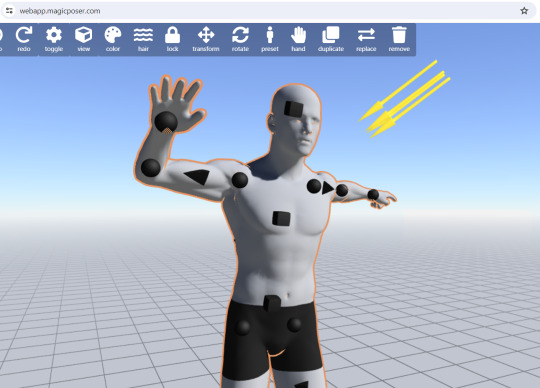
MIXAMO

Pose Archives

Bodies in Motion
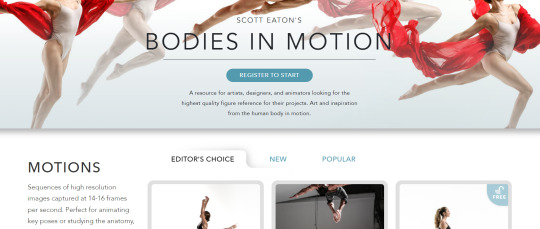
Posemy.art
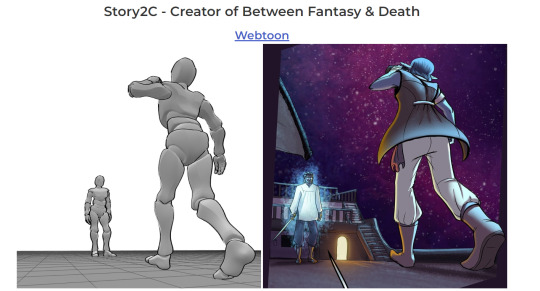
ReferenceAngle
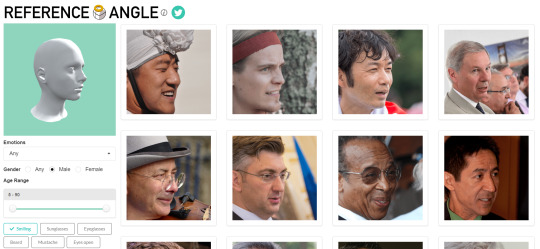
CroquisCafe
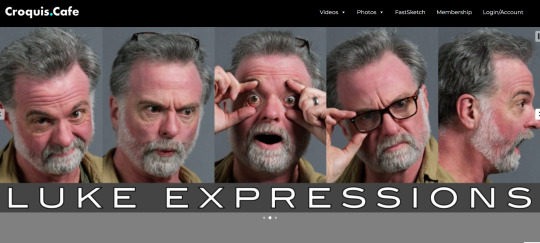
30K notes
·
View notes
Text



Drawing bases & pose references pt 54 ✨
SORRY FOR THE DELAY AAA hope you like ;u; as usual there's 3 more drawings for patrons!
1K notes
·
View notes
Text
One of my long time patrons requested a space painting tutorial with a focus on how to make the stars shine and the colors vibrant. So I recorded a speed paint I made under 10 minutes of how to paint the Milky Way. I hope it helps!
You can find free downloads of the brushes I used right here YuumeiArt.com/space-tutorial It contains a brush set for Photoshop and another set for Clip Studio (converted by Arcane Halo)
Music is Tree Soul by Kentdow
3K notes
·
View notes
Note
How do I write basic movements, I'm not a native speaker so it gets hard for me to define basic bodily movements. Even if it's as simple as reaching out and taking something off the counter
Facial expressions, gestures, and eye gaze are often identified as the 3 major types of body language, but other aspects such as posture and personal distance can also be used to convey information.
A few common gestures & their possible meanings:
Pursed lips. Tightening the lips might be an indicator of distaste, disapproval, or distrust.
Lip biting. People sometimes bite their lips when they are worried, anxious, or stressed.
Covering the mouth. When people want to hide an emotional reaction, they might cover their mouths in order to avoid displaying smiles or smirks.
Turned up or down. Slight changes in the mouth can also be subtle indicators of what a person is feeling. When the mouth is slightly turned up, it might mean that the person is feeling happy or optimistic. On the other hand, a slightly down-turned mouth can be an indicator of sadness, disapproval, or even an outright grimace.
A clenched fist can indicate anger in some situations or solidarity in others.
A thumbs up and thumbs down are often used as gestures of approval and disapproval.
The "okay" gesture, made by touching together the thumb and index finger in a circle while extending the other three fingers can be used to mean "okay" or "all right." In some parts of Europe, however, the same signal is used to imply you are nothing. In some South American countries, the symbol is actually a vulgar gesture.
The V sign, created by lifting the index and middle finger and separating them to create a V-shape, means peace or victory in some countries. In the United Kingdom and Australia, the symbol takes on an offensive meaning when the back of the hand is facing outward.
Crossed arms might indicate that a person feels defensive, self-protective, or closed-off.
Standing with hands placed on the hips can be an indication that a person is ready and in control, or it can also possibly be a sign of aggressiveness.
Clasping the hands behind the back might indicate that a person is feeling bored, anxious, or even angry.
Rapidly tapping fingers or fidgeting can be a sign that a person is bored, impatient, or frustrated.
Crossed legs can indicate that a person is feeling closed-off or in need of privacy.
Open posture involves keeping the trunk of the body open and exposed. This type of posture indicates friendliness, openness, and willingness.
Closed posture involves hiding the trunk of the body often by hunching forward and keeping the arms and legs crossed. This type of posture can be an indicator of hostility, unfriendliness, and anxiety.
The term proxemics, coined by anthropologist Edward T. Hall, refers to the distance between people as they interact.
Just as body movements and facial expressions can communicate a great deal of nonverbal information, so can the physical space between individuals.
Hall described 4 levels of social distance that occur in different situations:
Intimate Distance: 6 to 18 inches. This level of physical distance often indicates a closer relationship or greater comfort between individuals. It usually occurs during intimate contact such as hugging, whispering, or touching.
Personal Distance: 1.5 to 4 feet. Physical distance at this level usually occurs between people who are family members or close friends. The closer the people can comfortably stand while interacting can be an indicator of the level of intimacy in their relationship.
Social Distance: 4 to 12 feet. This level of physical distance is often used with individuals who are acquaintances. With someone you know fairly well, such as a co-worker you see several times a week, you might feel more comfortable interacting at a closer distance. In cases where you do not know the other person well, such as a postal delivery driver you only see once a month, a distance of 10 to 12 feet may feel more comfortable.
Public Distance: 12 to 25 feet. Physical distance at this level is often used in public speaking situations. Talking in front of a class full of students or giving a presentation at work are good examples of such situations.
Source ⚜ Some Additional Resources:
Anatomical Movements
Types of Body Movements
Human Body Movements
Hope this helps with your writing! Definitely have trouble with this at times as well.
680 notes
·
View notes